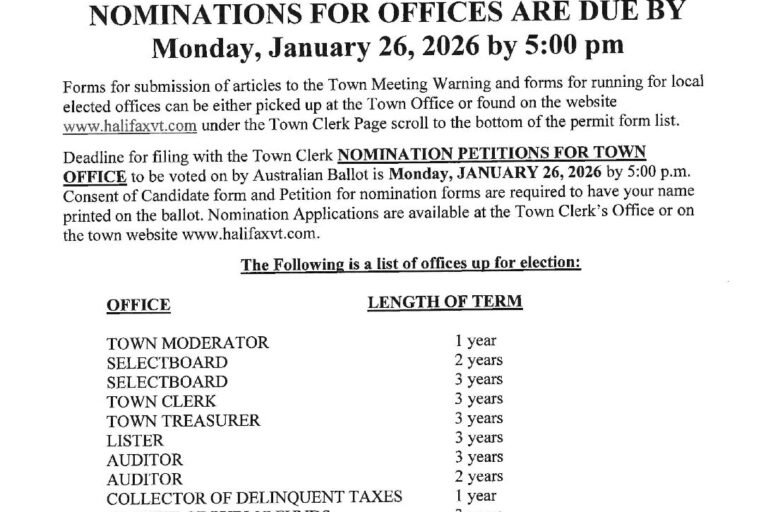Click below to take a look at our winter roads maintenance plan and policy:
See the link below for information about
the Jacksonville EZ Riders Snowmobile Club
***********************************************
Halifax Community Club
The Halifax Community Club was incorporated in 1952 “for the purpose of fostering education programs for the community of Halifax and the vicinity and other programs for education, instruction, and improvement of said community, and for providing for the poor of Halifax and the vicinity.” In recent years, a small and effective cadre of volunteers has been the heart and soul of the Halifax Community Club. In recent months, the heart and soul have been growing, with new members bringing their energy and ideas. There are many opportunities to participate. Perhaps you would like to share a slide show about your travels, help with upkeep of the Community Hall and its grounds, write an article for the newsletter, set-up for events, or recruit speakers. For more information, see Halifax Community Hall.
Deerfield Valley Lions Club
The Deerfield Valley Lions are active in building a better community with its outreach in eyesight assistance, support for educational services, relief from food insecurity, and helping with local recreation and beautification. Fundraisers include the Hungry Lion Bike Tour each September. The Lions enjoy local support that enables the club to live up to its motto “We Serve.” The club meets twice monthly except during the summer. To learn more, visit http://dvvtlions.org or like us on Facebook at Deerfield Valley Lions.
The Vermont Veteran’s Home, in Bennington, Vermont, is a residential care facility for Veterans, and offers programs and care for service men and women and their spouses. To learn about the Home, visit www.vvh.vermont.gov/
Senior Solutions provides resources for successful aging in Southeastern Vermont. They serve residents aged 60 and up, and the people who care about them. Senior Solutions web site: www.seniorsolutionsvt.org Senior Help Line: 1-800-642-5119, or 1-866-673-8376.






